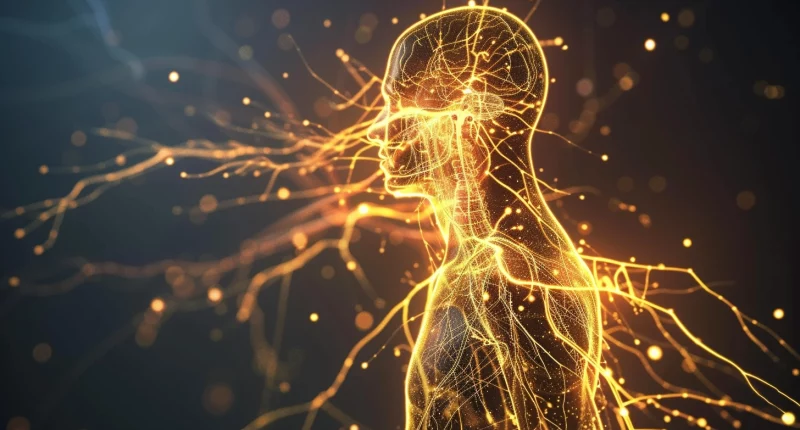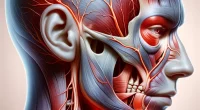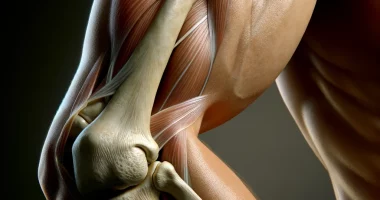Neuralgia
What is neuralgia?
Neuralgia is a peripheral nerve lesion accompanied by a burning sensation, pain, and other unpleasant sensations. Nerves that pass through narrow channels and openings, such as the intercostal nerves, are most often diagnosed. In some cases, there is a violation of nerve function, manifested by spontaneous muscle contraction or sensory disturbance. A prolonged course of neuralgia can be complicated by nerve and muscle atrophy inflammation. Treatment of the disease involves therapeutic and surgical procedures.
Nerve damage can occur in any part of the body. To the most common disease variants, doctors include neuralgia of the trigeminal and intercostal nerves. In this case, the pathology of the trigeminal nerve is manifested by severe facial pain and impaired skin sensitivity, and with neuralgia of the intercostal nerves, unpleasant sensations occur in the chest area. The disease is usually diagnosed in adults.
Symptoms of neuralgia
Pain is the main symptom of the disease. The area of pain directly depends on the location of the anatomical structures associated with the affected nerve. Most often, these are muscles and skin, so patients complain of increased pain during muscle tension and impaired sensitivity. The development of the disease can be accompanied by various complications manifested by more severe functional disorders.
Symptomsandsigns:
- Episodes of burning or stabbing pain resembling electric shocks;
- Unpleasant sensations increase when touching the painful area of the body;
- Prolonged bouts of aching pain;
- Soreness is periodically replaced by a complete absence of discomfort;
- Muscle stiffness;
- Increased sweating in the axillary region in intercostal neuralgia;
- Headaches and sleep disturbances;
- Bright lights, noise, and other stimuli increase pain.
If you are experiencing similar symptoms, we advise you to make an appointment with a doctor. Timely consultation will prevent negative consequences for your health. A prolonged course of neuralgia has a highly unfavorable effect on the patient’s well-being. Symptoms of neurosis arise, such as severe irritability and anxiety.
Causes of neuralgia
Neuralgia can be an independent disease that occurs without any preconditions or a consequence of other pathological conditions. Any diseases of tissues and organs in the nerve area can cause unpleasant symptoms. A common cause of neuralgia is nerve compression due to bone misalignment or poor posture. Sometimes, nerve dysfunction is a sign of a dangerous disease.
Possiblecauses:
- Overcooling of tissues. In this case, there is a violation of blood supply and metabolism in a specific anatomical area;
- Infectious diseases affecting the nerves or surrounding tissues. It causes an inflammatory process accompanied by swelling of the tissues and nerve compression;
- Injuries and bone defects: fracture of facial bones or ribs, curvature of the spine, destruction of intervertebral discs, intervertebral hernia, deformity of the rib cage;
- Abnormalities of the vessels that supply the nerves. It may be a narrowing, rupture, or pathologic enlargement (aneurysm) of the vessel;
- A malignant or benign tumor near the nerve. It causes compression of the tissue;
- Dental diseases like periodontitis;
- Destruction of the myelin sheath of the nerve. This condition occurs in multiple sclerosis;
- Undergone surgical interventions in the area of the nerve passage.
To the provocateurs of pain in different forms of neuralgia, doctors include eating, touching, exposure to cold, brushing teeth, and sudden movements. Due to a prolonged, painful reaction to such stimuli, many patients develop a nervous tic.
Diagnosis of neuralgia
If characteristic symptoms of neuralgia appear, it is necessary to make an appointment with a neurologist. The doctor asks the patient about complaints and examines the medical history. A general examination allows the neurologist to detect signs of the disease, including pain in a particular place, violation of skin sensitivity, and protective posture. The doctor prescribes instrumental and laboratory examinations to determine the cause of unpleasant sensations.
Methods of diagnosis of neuralgia:
- Computed tomography or magnetic resonance imaging are the most highly informative examinations, allowing us to obtain layer-by-layer images of anatomical areas in different projections. A neurologist prescribes a CT scan to examine the area of nerve passage and an MRI to look for tumor structures or signs of destruction of the myelin sheath of nerves. During the study, the doctor asks the patient to remove all metal jewelry, lie on the CT scanner table, and not move. The procedure is quick and painless.
- Magnetic resonance imaging of the cerebral vessels. A neurologist prescribes this study for symptoms of trigeminal neuralgia. The procedure is similar to conventional tomography, but before obtaining images, the doctor intravenously injects the patient with a contrast agent for a more accurate study of the necessary structures. MRI angiography allows you to assess the blood supply of tissues and the condition of even the smallest vessels. With the help of this procedure, neurologists detect aneurysms, small hemorrhages, and other causes of facial neuralgia;
- Electrocardiography is a study of the electrical activity of the heart. Such a procedure is prescribed by the doctor when the symptoms of intercostal neuralgia resemble angina pectoris. The specialist needs to exclude dangerous cardiovascular diseases to continue the diagnosis.
If necessary, the neurologist prescribes a consultation with a dentist, ophthalmologist, or other physician. Additional diagnostic procedures, including examination of digestive organs and tests for infection, help to quickly determine the cause of neuralgia and exclude conditions with similar symptoms.
Therapeutic treatment of neuralgia
Drug therapy is the primary method of treatment of neuralgia. The neurologist of our clinic selects medications to control pain, eliminate the cause of the disease, and restore nerve function. Complex therapy, including physical therapy methods, can significantly improve the patient’s condition and prevent complications. In addition to therapeutic prescriptions, the neurologist explains how to avoid pain attacks to the patient.
The methods used to treat neuralgia:
- Administration of anticonvulsants. These drugs are necessary to eliminate pronounced pain and increase the sensitivity of the nerve to external stimuli. The neurologist prescribes tegretol, carbamazepine, or another drug to the patient.
- Therapeutic massage. This supportive treatment is excellent for relieving the uncomfortable symptoms of intercostal neuralgia. The chiropractor gently works on the spine and thoracic region tissues to improve blood flow, reduce nerve compression, and relax muscles.
- Nerve blockade. The neurologist injects anesthetics, corticosteroids, or other drugs into the area of pain. The therapeutic effect is to reduce the sensitivity of the nerve and relieve symptoms. During the procedure, the doctor treats the skin at the puncture site with antiseptic, anesthetizes the tissue, and uses a needle to inject the medication into the desired area.
- Prescribing anti-inflammatory medications. A neurologist prescribes non-steroidal anti-inflammatory drugs like ibuprofen and nimesulide for short-term pain relief.
- Antispasmodics – medicines that relax muscles and eliminate pain in neuralgia. These drugs are used together with anticonvulsants to achieve the best therapeutic effect.
Surgical treatment of neuralgia
If a tumor, anatomical defect, or other pathology requiring surgical intervention is detected, the patient is scheduled for a consultation with a surgeon. The doctor performs the necessary examinations and prescribes treatment.
Methods of surgical treatment of neuralgia:
- Percutaneous trigeminal rhizotomy is a radical method of pain relief for trigeminal neuralgia. The surgeon treats the skin with antiseptic and injects an anesthetic. Then, a puncture is made in a predetermined place with the introduction of a thin needle in the area of the trigeminal nerve’s root under fluoroscopy control. With the help of a device, the specialist gradually heats the needle and destroys part of the nerve. As a result, there is a decrease in sensitivity in the facial area;
- Microvascular decompression of the trigeminal root is the surgical removal of the nerve compression factor. It is a complex intervention performed under the control of a surgical microscope. The doctor makes a small hole in the back of the skull and inserts instruments to perform the manipulation. The procedure is performed under anesthesia;
- Stereotactic radiosurgery, which involves removing a section of nerve with gamma rays. During the procedure, the patient is carefully fixed in a certain position. With the help of a special apparatus, targeted removal of the nerve root is performed. A violation of the integrity of neighboring tissues does not accompany such treatment.
- Surgical neurolysis, a procedure in which scar tissue or adhesions surrounding a nerve are carefully dissected and removed. It aims to relieve nerve compression, restore nerve function, and alleviate symptoms such as pain, numbness, or weakness
All these treatment options are available in more than 570 hospitals worldwide (https://doctor.global/results/diseases/neuralgia). For example, surgical neurolysis can be performed in 42 clinics across Germany for an approximate price of $5,600 (https://doctor.global/results/europe/germany/all-cities/all-specializations/procedures/surgical-neurolysis).
Prevention of neuralgia
Methods of prevention are aimed at preventing the development of secondary neuralgia against the background of hypothermia or inflammation of tissues.
Physician’sGuidelines:
- Mandatory hat-wearing in winter;
- Timely treatment of chronic maxillary sinusitis and dental infections;
- Regular follow-up with a neurologist for peripheral nerve disease.



